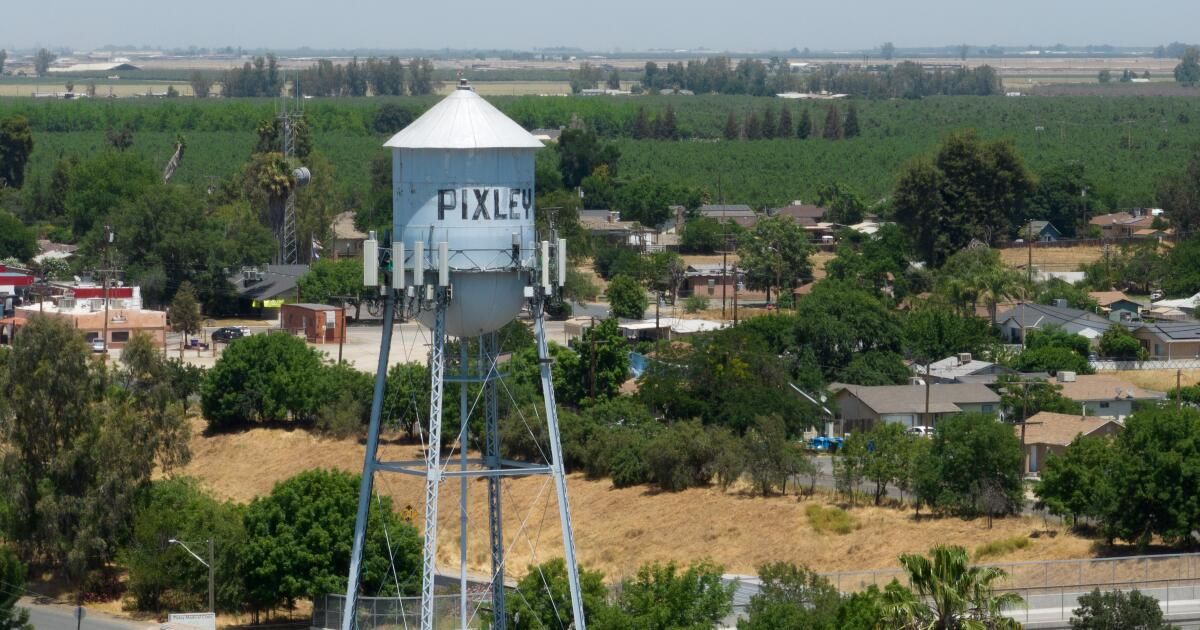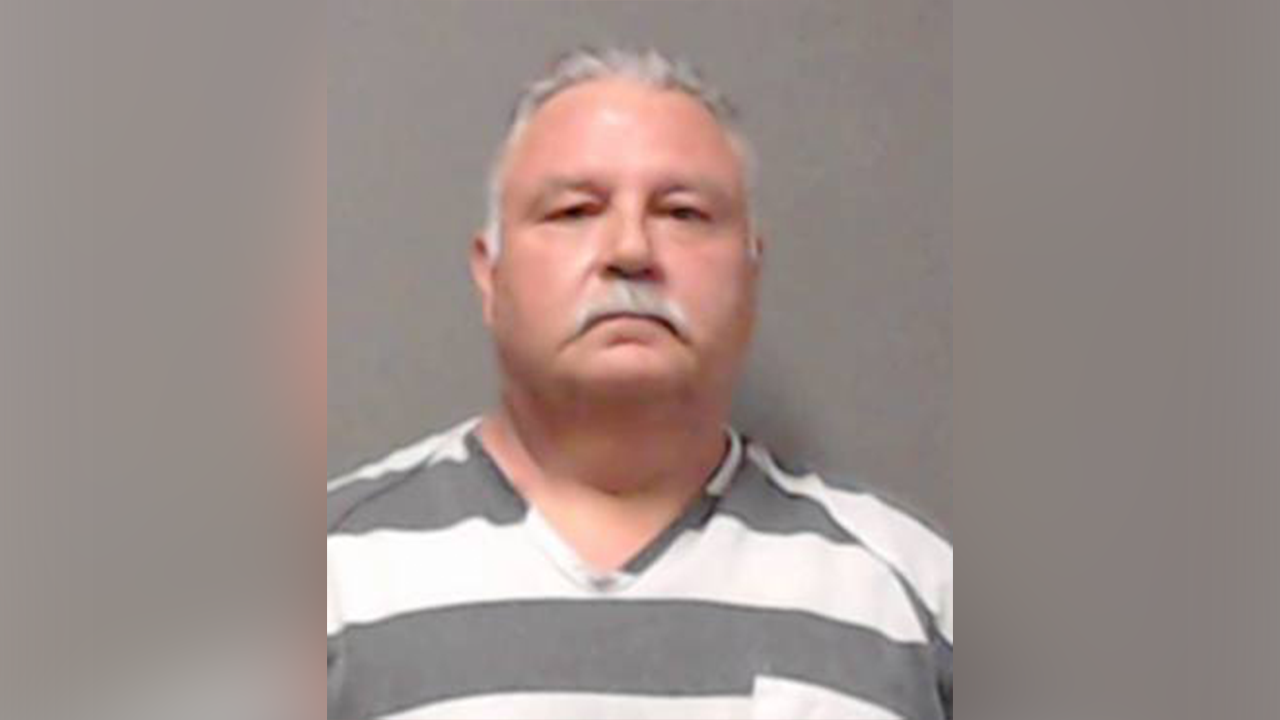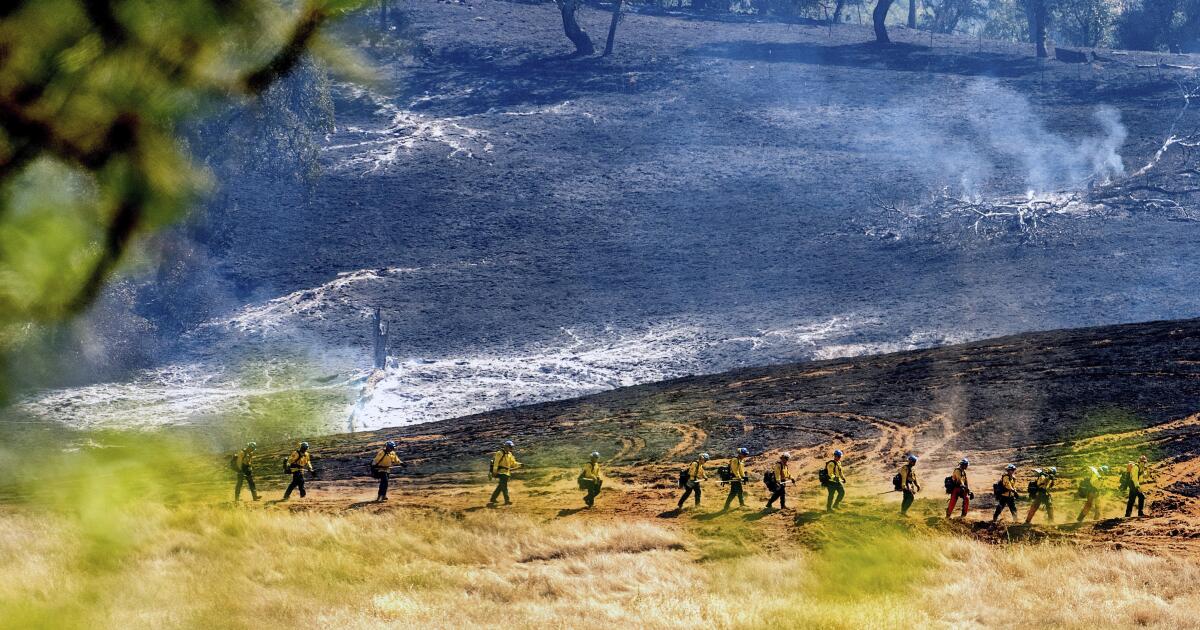California water regulators are cracking down on a second agricultural area in the San Joaquin Valley for failing to take adequate steps to curb overpumping that is depleting groundwater, causing land to sink and damaging a canal that carries water for 1 million acres of farmland and more than 250,000 people.
The state Water Resources Control Board voted unanimously to place the Tule Groundwater Subbasin on probationary status, a move that carries additional state oversight, new water rates and requirements for most well owners to report how much they are pumping.
“I think we're really in a crisis situation,” said board Vice President Dorene D'Adamo after listening to hours of testimony from farmers, water managers, residents and attorneys.
State officials cited deficiencies in local groundwater management plans, including chronic declines in aquifer levels that they estimate could put more than 550 domestic wells at risk of drying up during the drought.
Aggressive and shocking reports on climate change, the environment, health and science.
They also said the plans do not adequately limit excessive pumping that is causing land to sink in parts of the area. D'Adamo said the damage that rapid land sinking is causing along parts of the Friant-Kern Canal is concerning and needs to be addressed.
Farms in the area rely on groundwater to irrigate hay, corn, grapes, almonds, pistachios, oranges and other crops. As large amounts of groundwater are extracted, layers of sediment and clay can collapse and cause the land surface to sink.
In one area of the Tule Subbasin west of Tipton, state officials said, the ground has sunk more than seven feet since 2015.
About 3.5 feet of land subsidence has been measured along parts of the Friant-Kern Canal since 2015. The 152-mile canal, which was built by the federal government in the 1940s and early 1950s, carries water from the San Joaquin River from Friant Dam near Fresno to Bakersfield.
The Friant-Kern Canal is “experiencing alarming levels of subsidence, which has caused hundreds of millions of dollars in damage,” said Jason Phillips, executive director of the Friant Water Authority, which operates and maintains the canal. Land subsidence has significantly reduced the canal’s water delivery capacity, and state, local and federal agencies are investing $326 million in the first phase of a drainage project. project to repair a section of the canal.

The Friant-Kern Canal has been damaged by land subsidence caused by aquifer depletion.
(Brian van der Brug/Los Angeles Times)
Phillips supported the board’s action and specifically blamed one subbasin agency, the East Tule Groundwater Sustainability Agency, for failing to adopt adequate plans to limit pumping and stabilize the soil. He said the area’s continued subsidence now threatens to undermine recent repairs and investments, including $83 million in state taxpayer funds.
Federal officials urged the state water board to take steps to limit land subsidence and protect the canal, which is estimated to have lost more than 60 percent of its original capacity in its middle section.
The repair project “was years in the planning, cost hundreds of millions of dollars, and is being significantly negatively impacted due to the lack of proper groundwater management,” said David McCray, an attorney for the U.S. Department of the Interior. “If substantial steps are not taken to correct the subsidence, the Friant-Kern Canal — and more than 250,000 Californians and more than 1 million acres of agricultural land — will continue to be negatively impacted at considerable cost.”
State officials reviewed groundwater plans A study by seven local agencies found that the plans failed to address chronically declining groundwater levels, degrading water quality and continued land subsidence, among other problems. It cited estimates that current pumping in the area is using up, on average, at least as much water each year as the combined use of half a million homes.
Rogelio Caudillo, general manager of the Eastern Tule groundwater agency, urged the state board to delay parole for the area. He said his agency has made progress on plans to limit pumping and address subsidence, and is taking steps to protect drinking water wells.
But board member Laurel Firestone said the agency's pumping limits “are not being enforced quickly enough.”
“It seems like a slightly more aggressive program is needed,” he said.
At the end of the day’s meeting, which lasted all Tuesday, board members voted to intervene to enforce the requirements of the Sustainable Groundwater Management Act (SGMA). The law, which was passed in 2014, requires local agencies to develop plans to curb overpumping. In many areas, agencies are required to meet sustainable groundwater management goals by 2040.
He Tule sub-basin It is one of six areas in the San Joaquin Valley where officials have deemed local plans inadequate, and is the second region to be put on probation.
After the board took its decision first vote to intervene In April, in the neighboring Tulare Lake sub-basin, farmers filed a lawsuit to try to overturn the decision, arguing that the state's demands are unreasonable and harmful to the local economy. That case in Kings County Superior Court has put the determination of the state on hold and suspended the requirement that producers begin reporting how much water they pump.
In the Tule area, rural community drinking water protection advocates supported state intervention, warning that inaction would hurt low-income people of color, including many farmworkers.
Local agencies have been slow to address problems with their plans, said Nataly Escobedo Garcia, water policy coordinator for the Leadership Counsel for Justice and Accountability. “It is still the frontline communities that are literally paying the price and the cost of continued overexploitation.”
Those costs, she and others said, fall on residents not only when shallow domestic wells dry up, but also when declining water levels worsen concentrations of pollutants, or when subsidence damages wells.
The Tule area has an estimated population of 152,000 people and includes the city of Porterville, as well as communities such as Allensworth, Alpaugh, Ducor, East Porterville and Pixley.
Some Pixley residents told the board they are dealing with worsening water quality and rising water bills, which they say are related to declining aquifer levels.
“Our water has become very bad. It comes out brown, it comes out dirty. There is no pressure,” said Christina Velasquez, a resident who said her family has been buying bottled water and no longer drinks tap water, but still has to pay higher rates.
One reason for the recent rate hike was that the subsidence caused the well casing to collapse, requiring costly repairs, Escobedo Garcia said.
Beverley Whitfield said higher water bills were a financial burden and blamed heavy pumping by nearby dairies and other farms.
“Our wells have sunk. It’s because of overuse,” Whitfield said. “I think we deserve better.”
Recent drinking water sampling Significant amounts of contaminants such as arsenic, nitrate and the carcinogenic chemical 1,2,3-trichloropropane have been detected in wells in the Tule area at levels exceeding safe thresholds.
The law requires local agencies to prevent “significant and unreasonable degradation of water quality.” State water board staff listed further water quality degradation among deficiencies in local plansand recommended measures to address the problems.
Trustees of Tule's local agencies recently submitted revised plans. Board staff said an initial review concluded some issues had been addressed, but significant problems remain, especially related to continued land subsidence.
Now that the area is on probation, most well owners will be required within 90 days to begin keeping records of how much water they pump, and then report that data to the state.
Many well owners will be required to pay state fees starting in 2026, which include a flat fee of $300 per well and $20 per acre-foot of water pumped.
The state water board determined that two local agencies, the Delano Earlimart Irrigation District and the Kern-Tulare Water District, are inadequately managing groundwater in their portions of the subbasin, and excluded them from paying rates and reporting required data.
Board staff say they will continue to work with local agencies to address the problems so they can end the intervention. But if the agencies fail to address the deficiencies within a year, the board could implement more stringent intervention measures, including pumping restrictions and fines for exceeding limits.
Several farmers said they are concerned that state intervention will further hamper their businesses at a time when they are struggling with low crop prices and the decline in land values.
“Banks are refusing to lend to us,” said Nick Sahota, a farmer from Terra Bella who also spoke on behalf of other farmers. “We are losing our farms.”
Jim Morehead said he's learned to endure tough times over more than five decades in farming, but not the challenges that lie ahead.
“Now, for the first time, I don’t see a future for the family farm in the San Joaquin Valley,” Morehead said. “With the implementation of the SGMA, the value of my land plummeted. Since the change in water policy five years ago, the value of my land has dropped 70%.”
He said he had to take a third of his family's farmland out of production and expects to reduce it further, forcing him to lay off employees.
“I'm not against water regulation, but when I look at other states' processes compared to California, it seems like their farmers get a lot more support to be successful,” Morehead said.
Morehead's son, Justin, said he fears that without local farms, his community of Pixley will struggle.
“Water is the currency of the San Joaquin Valley. The SGMA process is more than a water policy. It is an economic framework that will determine whether rural communities will be viable in the long term,” said Justin Morehead.
He said the groundwater law is generating changes “at a dizzying pace” without considering the effects on communities.
“What future awaits communities like my hometown of Pixley?” he asked.












